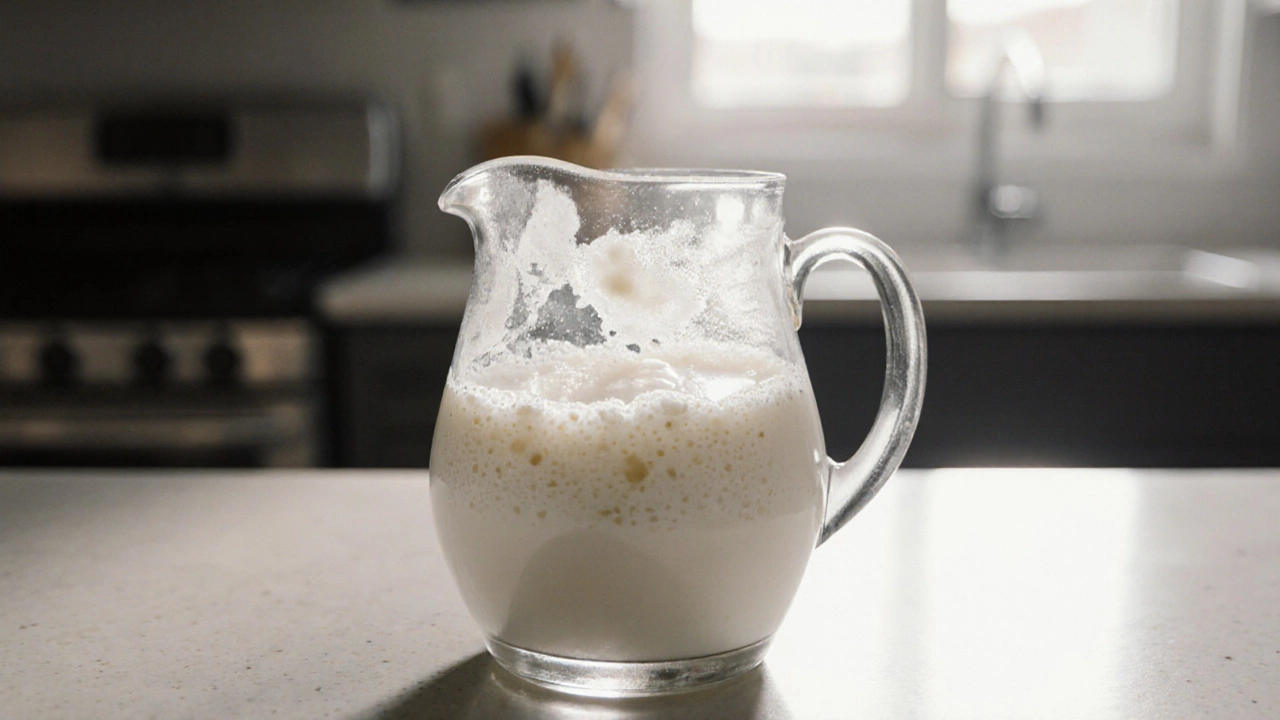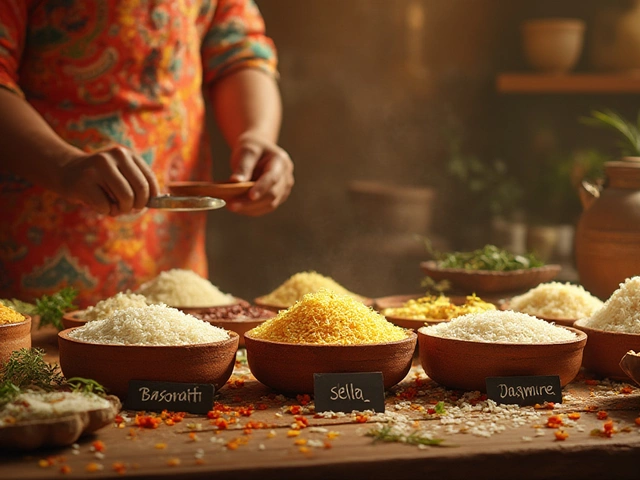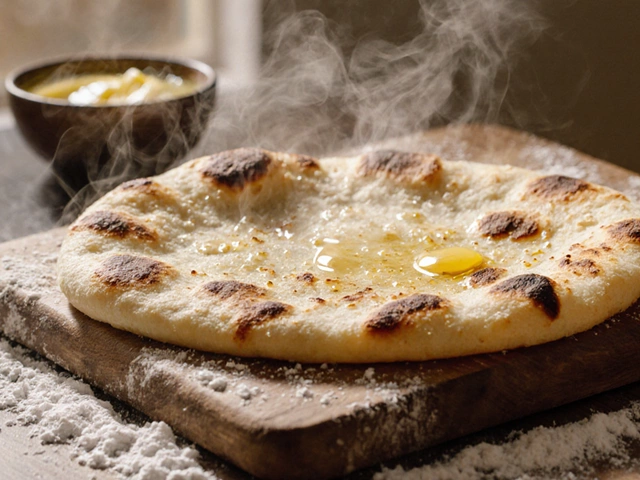Spoiled Milk Safety Checker
Safety Assessment
Safety Assessment
When you see milk that has turned sour, Spoiled Milk is milk that has passed its optimal freshness date and begun to ferment, developing a tangy odor and thicker consistency. Many wonder if that same batch can be rescued into Curd - the thick, white dairy product formed by coagulating milk proteins with natural bacteria. Below you’ll get the full scoop on when it works, how to do it safely, and what to avoid.
What actually happens when milk spoils?
Milk spoils because Lactic Acid Bacteria naturally present in raw milk and introduced during handling start converting lactose into lactic acid. The rising acid drops the pH from around 6.7 to below 4.5, causing casein proteins to clump together. This is the same biochemical pathway that turns fresh milk into curd, yogurt, or paneer.
How curd forms - the role of bacteria and pH
Traditional Indian curd relies on a small amount of previously set curd (the starter) to inoculate warm milk. The starter provides a ready‑made colony of Fermentation the process where microbes convert sugars into acids. As the lactic acid builds up, the pH falls, and the milk proteins coagulate into a soft gel. The key is reaching a pH of about 4.6 - that’s when the texture becomes firm enough to cut with a spoon.
Safety checklist - can you trust spoiled milk?
- Smell test: If the milk smells like rotten eggs or has a fizzy, beer‑like aroma, discard it. A mild sour scent is normal for controlled fermentation.
- Visual cue: Look for curdling already in progress. Large clumps, a thin film on top, or unusual colors (greenish or pink) indicate unwanted microbes.
- Temperature history: Milk that sat above 40°F (4°C) for more than two hours is at higher risk of pathogenic growth (e.g., E. coli, Salmonella).
- Container cleanliness: Only use stainless steel or glass vessels that have been boiled and wiped dry.
If all three checks pass, the milk is generally safe to convert into curd. Remember, the goal is to harness the existing lactic acid bacteria, not to encourage harmful strains.
Step‑by‑step: making curd from spoiled milk
- Boil the milk: Bring the suspect milk to a rolling boil for 2‑3 minutes. Boiling kills most pathogens while preserving the good bacteria that survived the spoilage stage.
- Cool to the right temperature: Let it drop to 110‑115°F (43‑46°C). Use a kitchen thermometer; this is the sweet spot for bacteria to multiply without dying.
- Add a starter: Mix in 2‑3tbsp of fresh, store‑bought curd or plain yogurt per litre of milk. The starter re‑introduces a known, safe culture.
- Cover and let ferment: Place a clean lid or cloth over the pot and keep it in a warm, draft‑free spot for 4‑8hours. The exact time depends on ambient temperature.
- Check consistency: When the surface is firm and pulls away cleanly from the sides, the curd is ready. If it’s still runny, give it another hour.
- Refrigerate: Transfer the curd to a glass container and chill for at least 2hours before serving.
The end result is a tangy, creamy curd that can be eaten plain, sweetened, or used as a base for lassi.
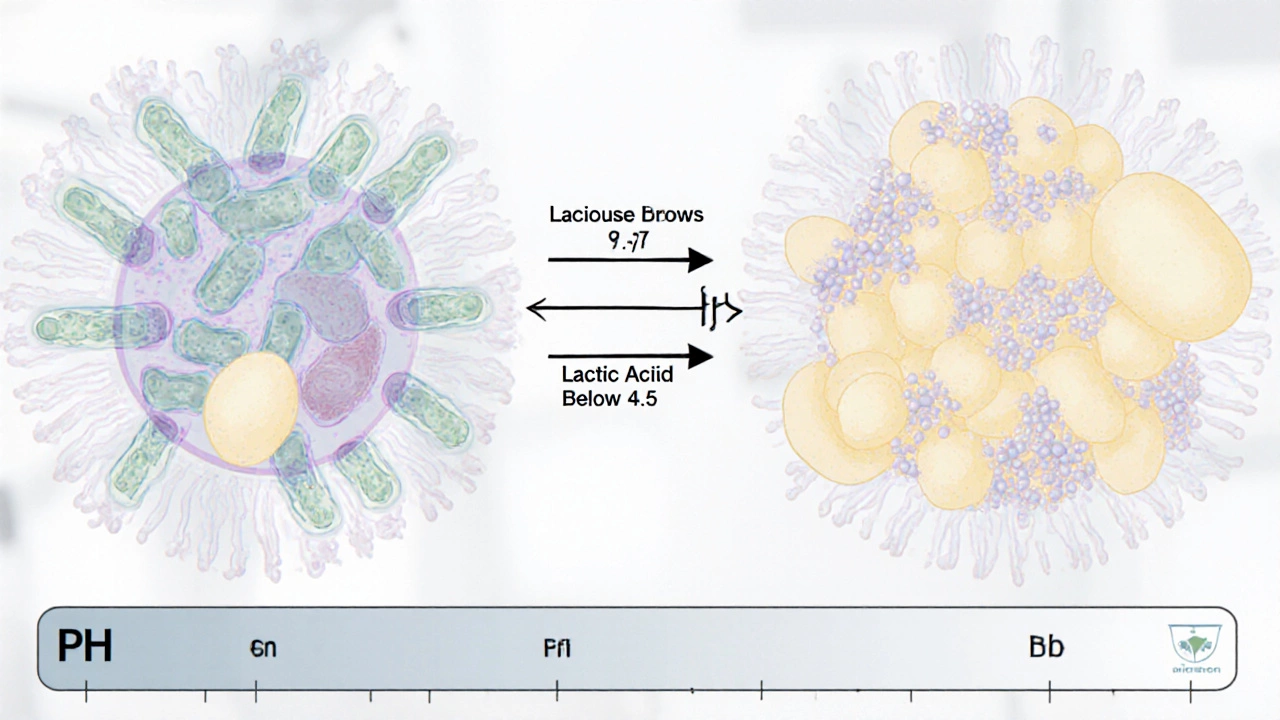
When to skip - situations where using spoiled milk is a bad idea
- Milk that has been left out overnight at room temperature.
- Milk with a pungent, rotten smell or visible mold.
- When you need a neutral flavor - spoiled milk adds a stronger sour note.
- If you’re preparing curd for infants or people with compromised immunity.
In these cases, it’s safer and tastier to start with fresh milk.
Turning your curd into homemade paneer
If you’re after fresh paneer, the same batch of curd can be pressed into cheese. Here’s a quick rundown:
- Heat the curd gently to 130°F (54°C) - this helps the whey separate.
- Line a strainer with a clean cheesecloth and pour the curd in.
- Gather the cloth edges and press with a weight (about 2kg) for 30‑45minutes.
- Unwrap the solid block - you now have Homemade Paneer a fresh, soft cheese that can be cubed, fried, or added to curries.
Because the starting curd already had a higher acidity, the resulting paneer will be slightly softer and have a subtle tang, perfect for dishes like paneer tikka.
Common mistakes & pro tips
- Don’t skip boiling: Boiling is the only step that guarantees harmful microbes are eliminated.
- Mind the temperature: Below 100°F the bacteria are sluggish; above 120°F they die.
- Use a reliable starter: A fresh curd or plain yogurt with live cultures ensures a consistent flavor.
- Avoid metal containers after boiling: Some metals can react with the acid and alter taste.
- Store correctly: Keep the finished curd in a refrigerator below 40°F (4°C) and consume within 5‑7days.
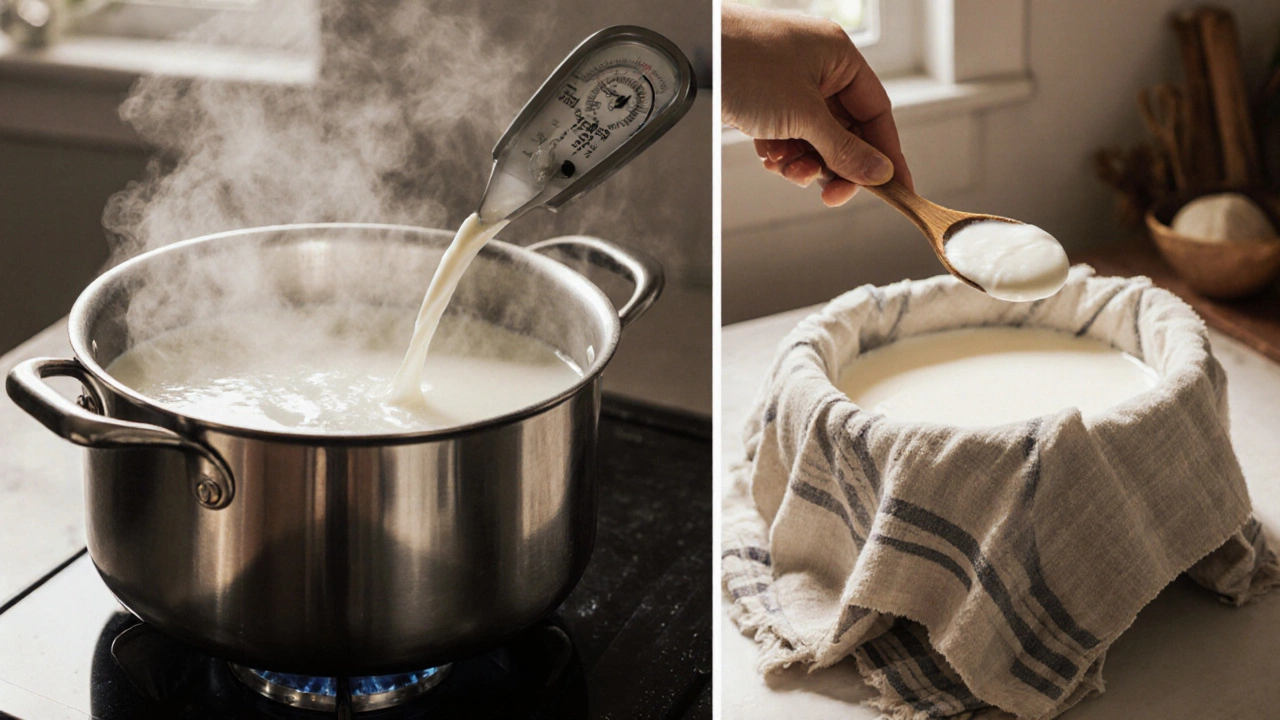
Quick comparison: Fresh vs. Spoiled Milk for Curd
| Aspect | Fresh Milk | Spoiled Milk |
|---|---|---|
| Initial pH | ~6.7 (neutral) | 4.5‑5.0 (already acidic) |
| Flavor profile | Mild, creamy | Noticeably sour, tangy |
| Safety steps | Boil optional (mostly for taste) | Boil mandatory to kill pathogens |
| Texture of curd | Soft to firm depending on fermentation time | Often firmer quicker due to existing acid |
| Best uses | Everyday curd, lassi, smoothies | When you have excess sour milk, homemade paneer, tangy dips |
Frequently Asked Questions
Frequently Asked Questions
Is it safe to eat curd made from milk that smells a little sour?
Yes, as long as the sour smell is mild, there’s no visible mold, and you boil the milk before adding a starter. Boiling kills harmful bacteria while the good lactic acid bacteria survive to make curd.
Can I skip the starter and rely only on the bacteria already in spoiled milk?
You can, but the result is unpredictable. Using a known starter ensures consistent texture and flavor; without it, you may end up with grainy or overly sour curd.
How long can I store curd made from spoiled milk?
Refrigerated curd lasts 5‑7days. Smell it each day; if the scent becomes foul or the texture separates dramatically, discard it.
Will the paneer made from this curd be safe for children?
Only if you boiled the milk thoroughly and used a fresh, clean starter. The extra boiling step removes most pathogens, making the paneer safe for all ages.
What temperature is ideal for fermenting curd?
110‑115°F (43‑46°C) is ideal. Below that, bacteria work too slowly; above 120°F they start dying, leading to thin or failed curd.





